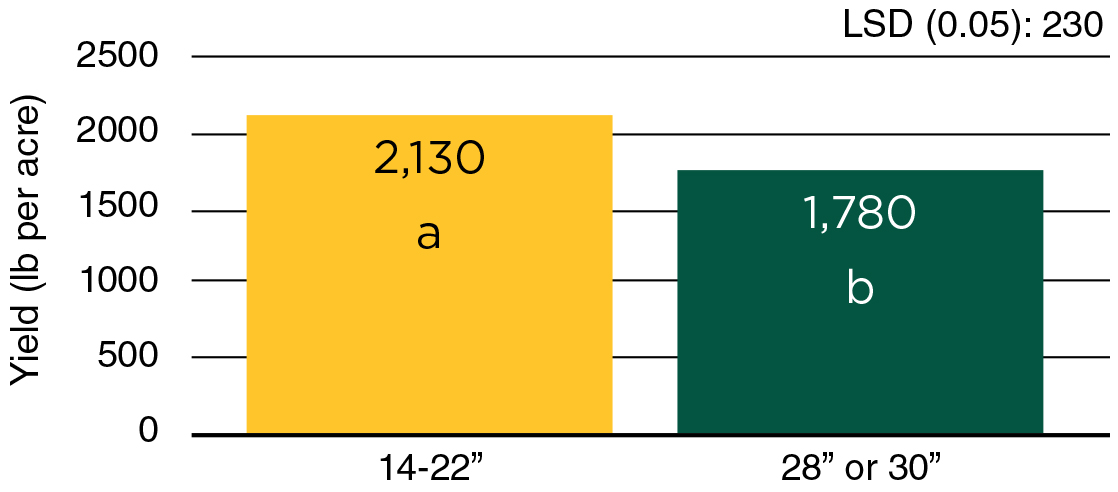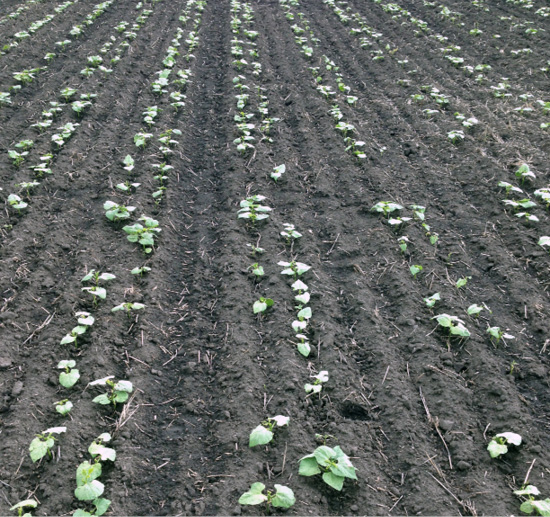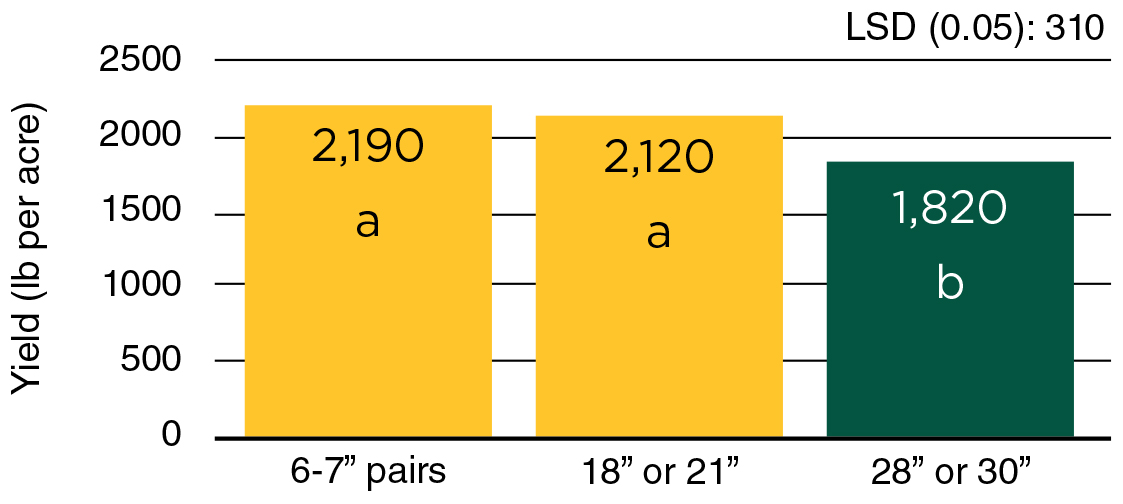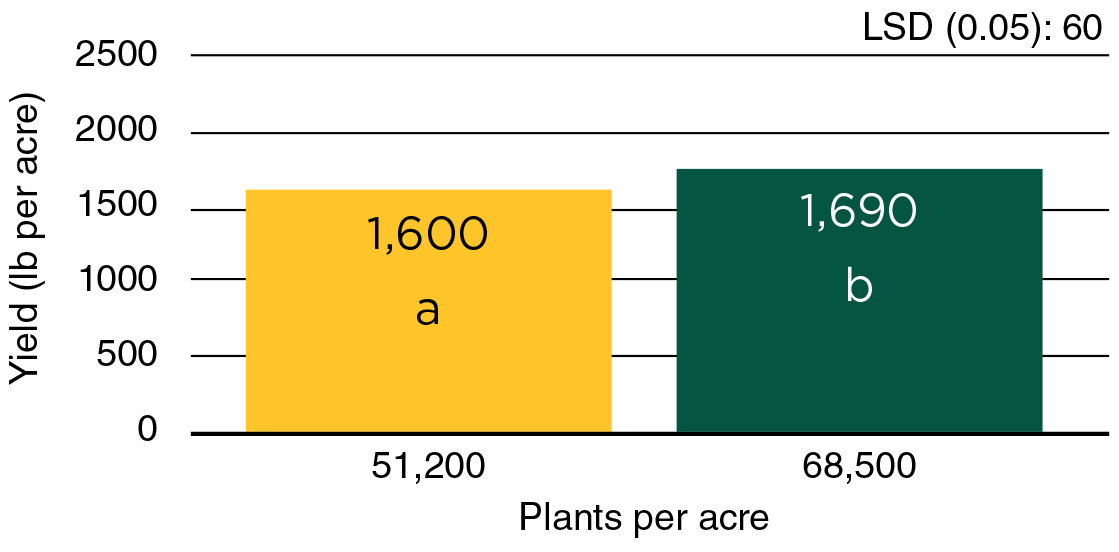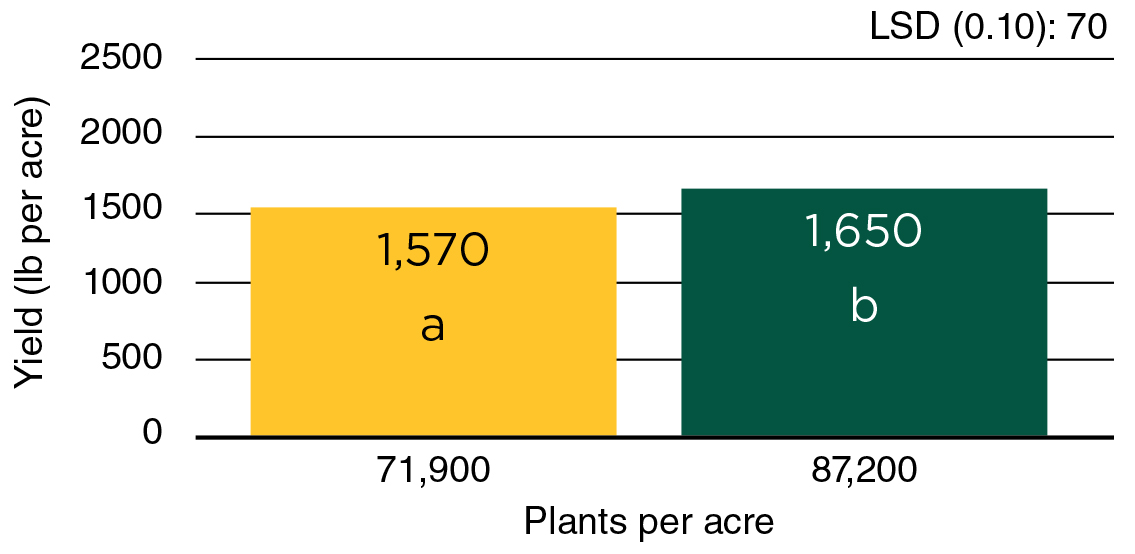Analyzing pinto bean plant population as a single production factor, the impact of reduced plant population was measured across eight site-years of trials (Carrington, 2018-21; Minot, 2018-19; and Langdon, 2020-21). The average population of 51,200 plants per acre produced 1,600 lb per acre compared to the population of 68,500 plants per acre that produced 1,690 lb per acre (Figure 3). The greater plant density, which is similar to the standard recommendation of 70,000 plants per acre, had a yield advantage of 6%.
Figure 3. Pinto bean seed yield between reduced and standard plant populations, Carrington, 2018-21; Minot, 2018-21; and Langdon, 2020-21 (8 site-years)1
1 Means with no similar letters are significantly different.
Another database, averaged across three site-years of trials (Carrington, 2013 and 2018; and Langdon, 2021), indicates a pinto bean yield increase with greater than the standard plant population. Average plant density of 87,200 plants per acre produced 1,650 lb per acre compared to 1,570 lb per acre with 71,900 plants per acre (Figure 4). The increased plant density had a yield advantage of 5%.
Figure 4. Pinto bean seed yield between standard and increased plant populations, Carrington, 2013 and 2018; and Langdon, 2021 (3 site-years)1
1 Means with no similar letters are significantly different.
